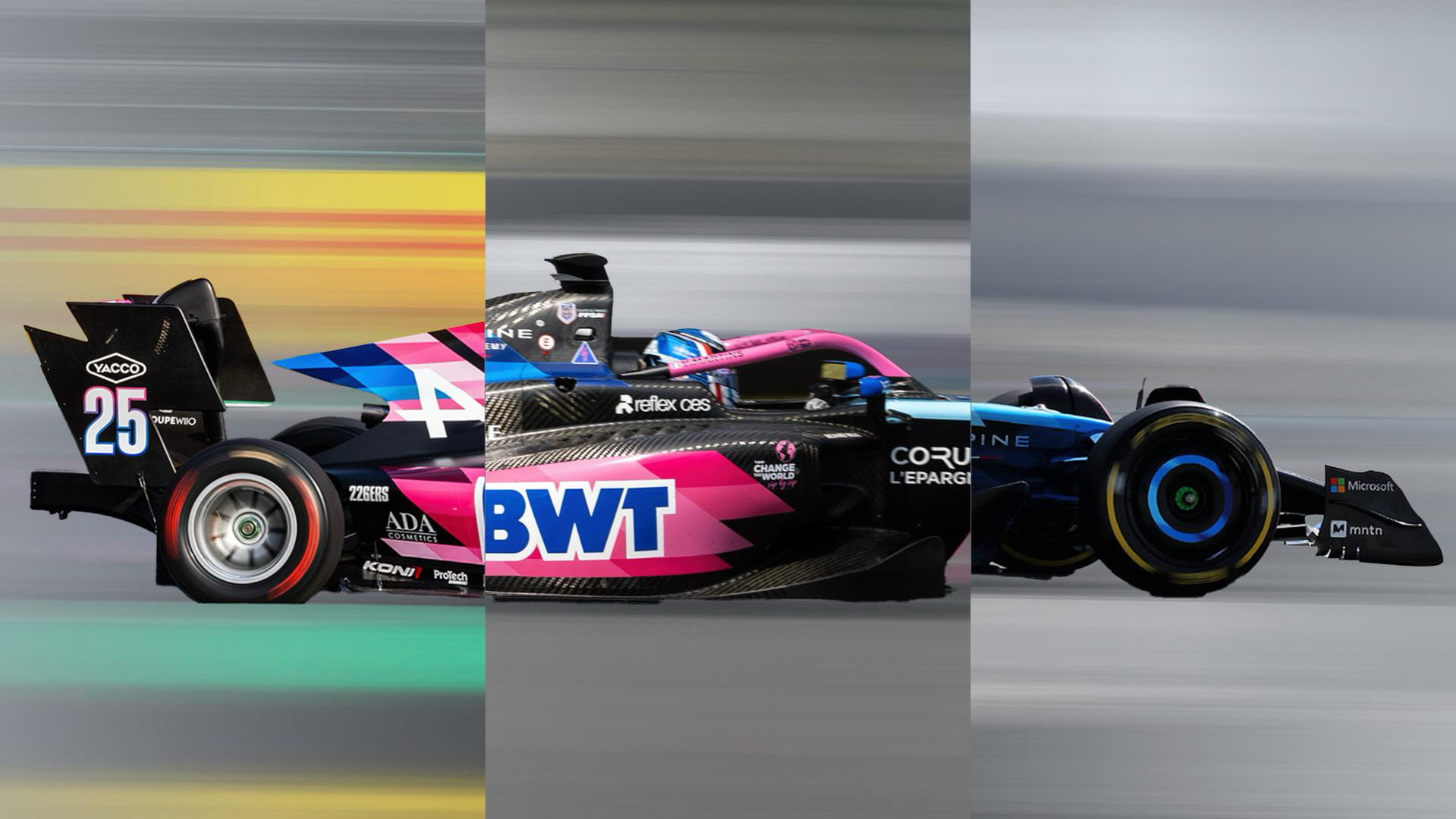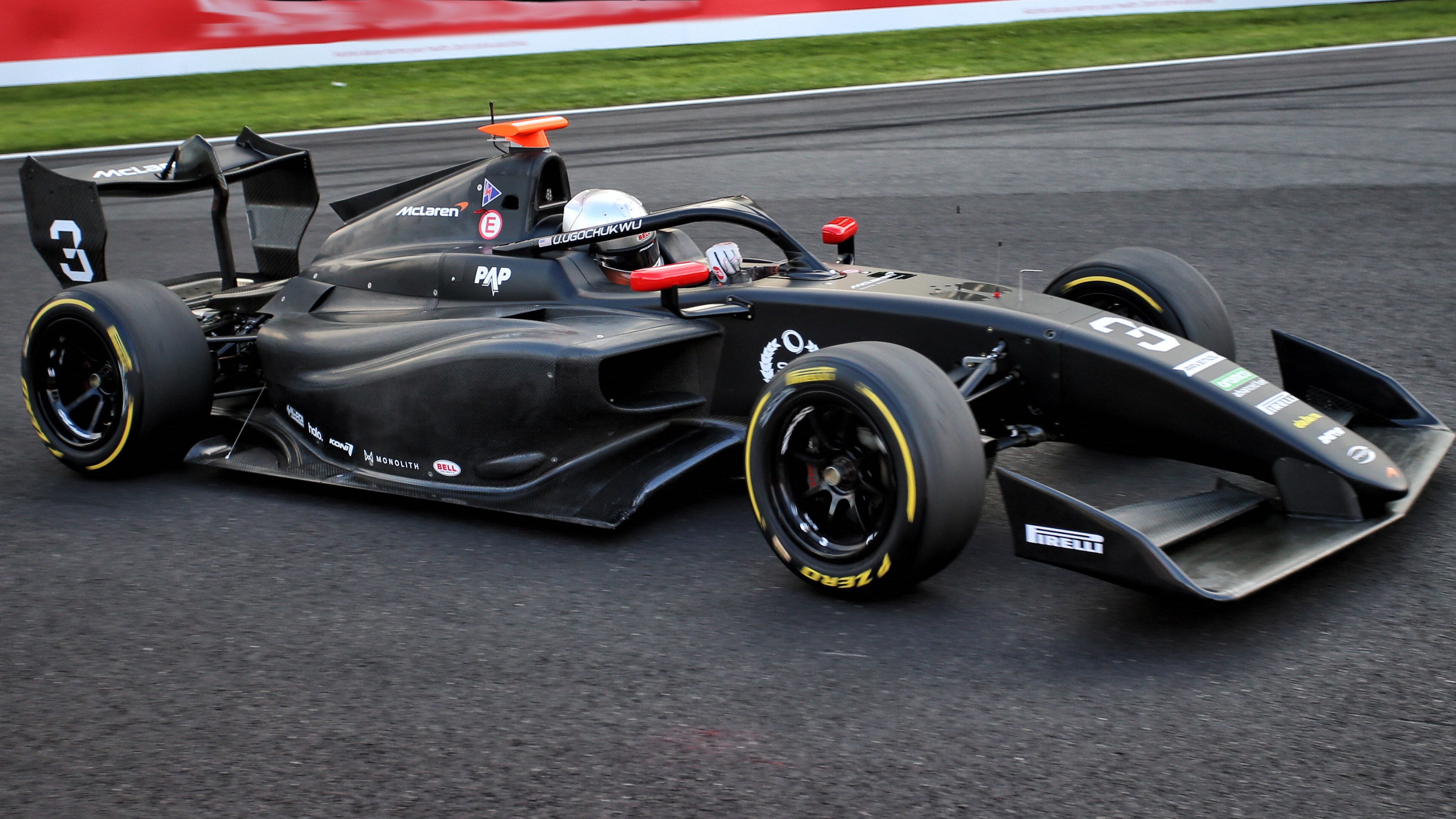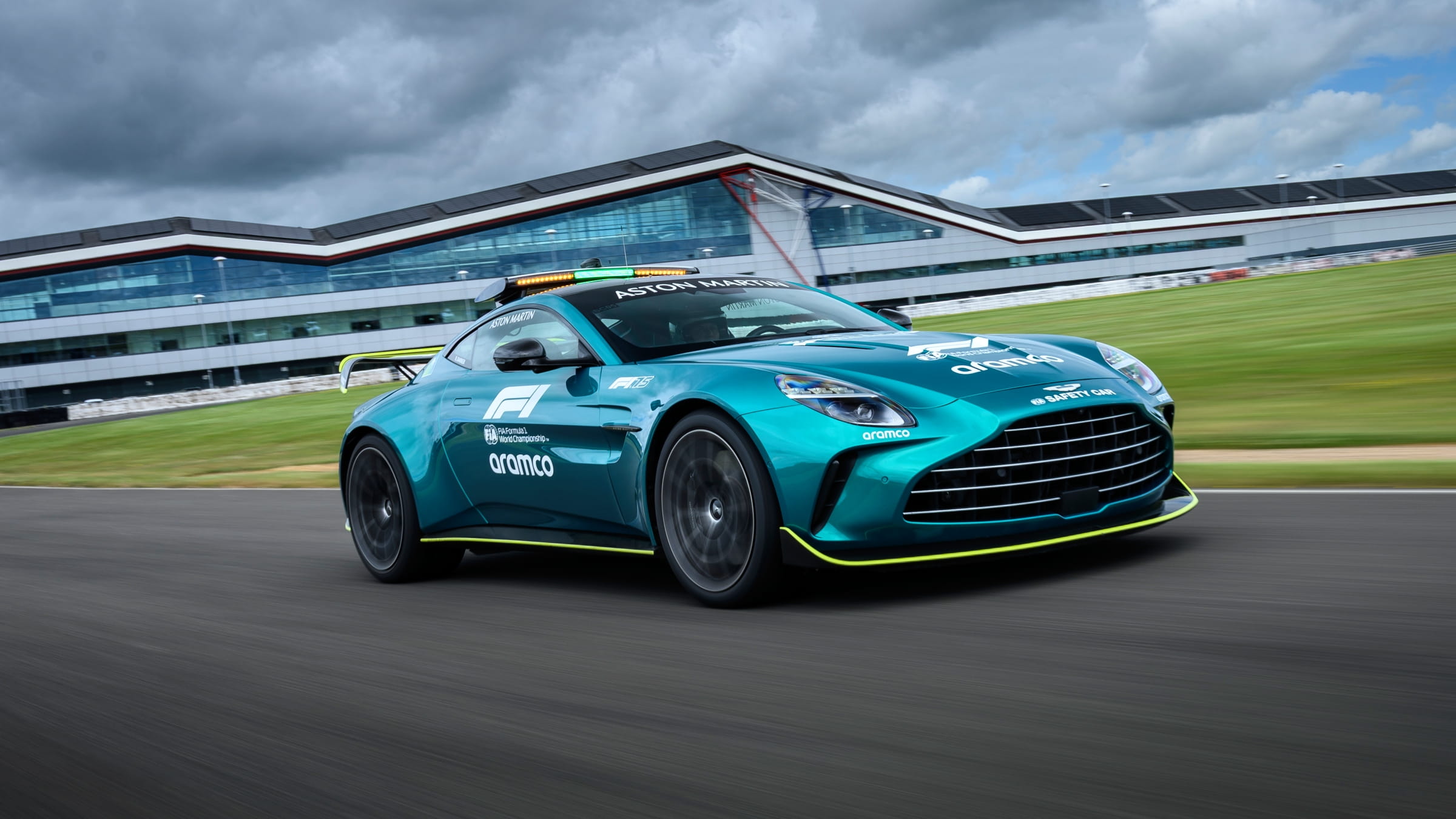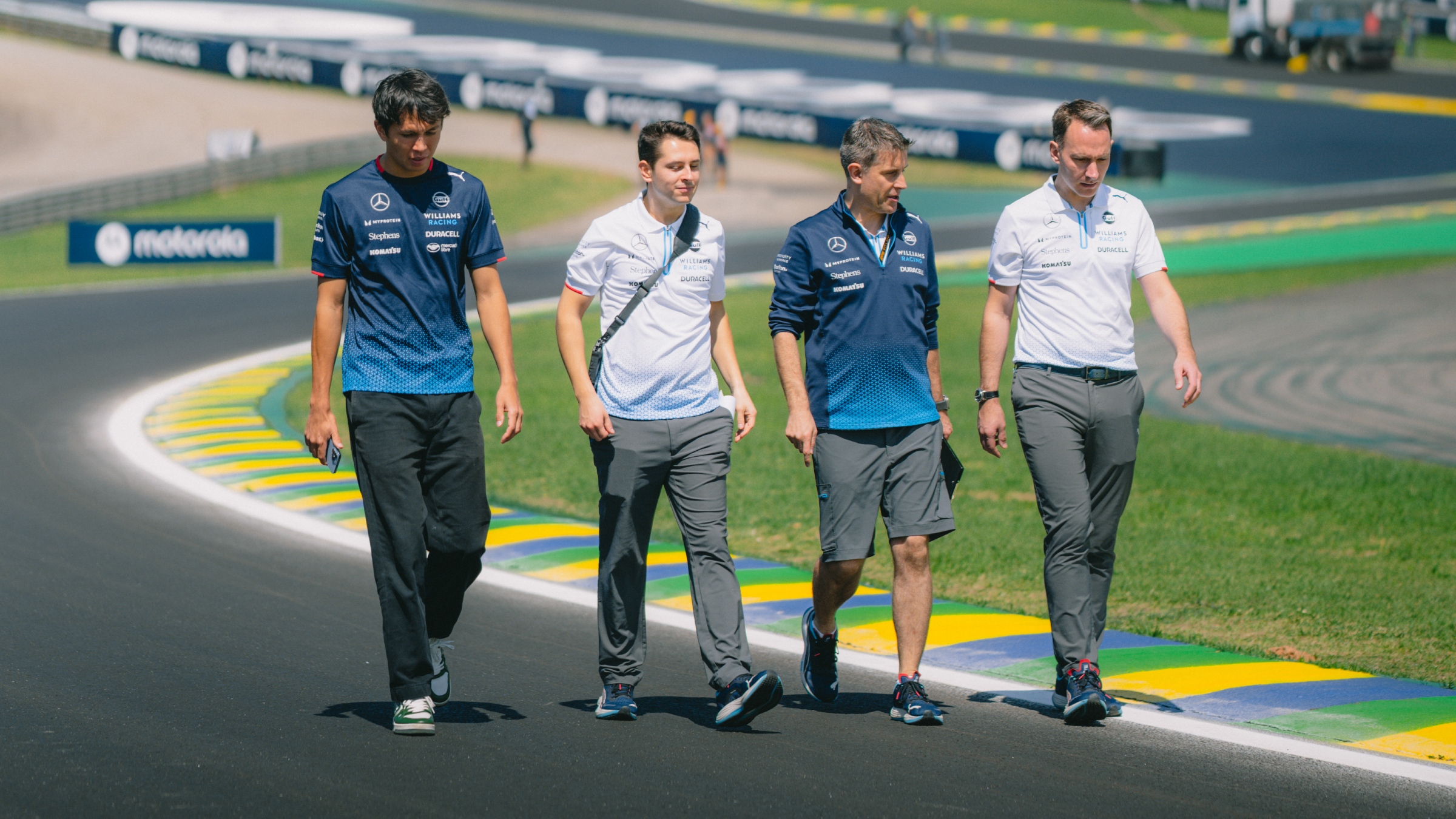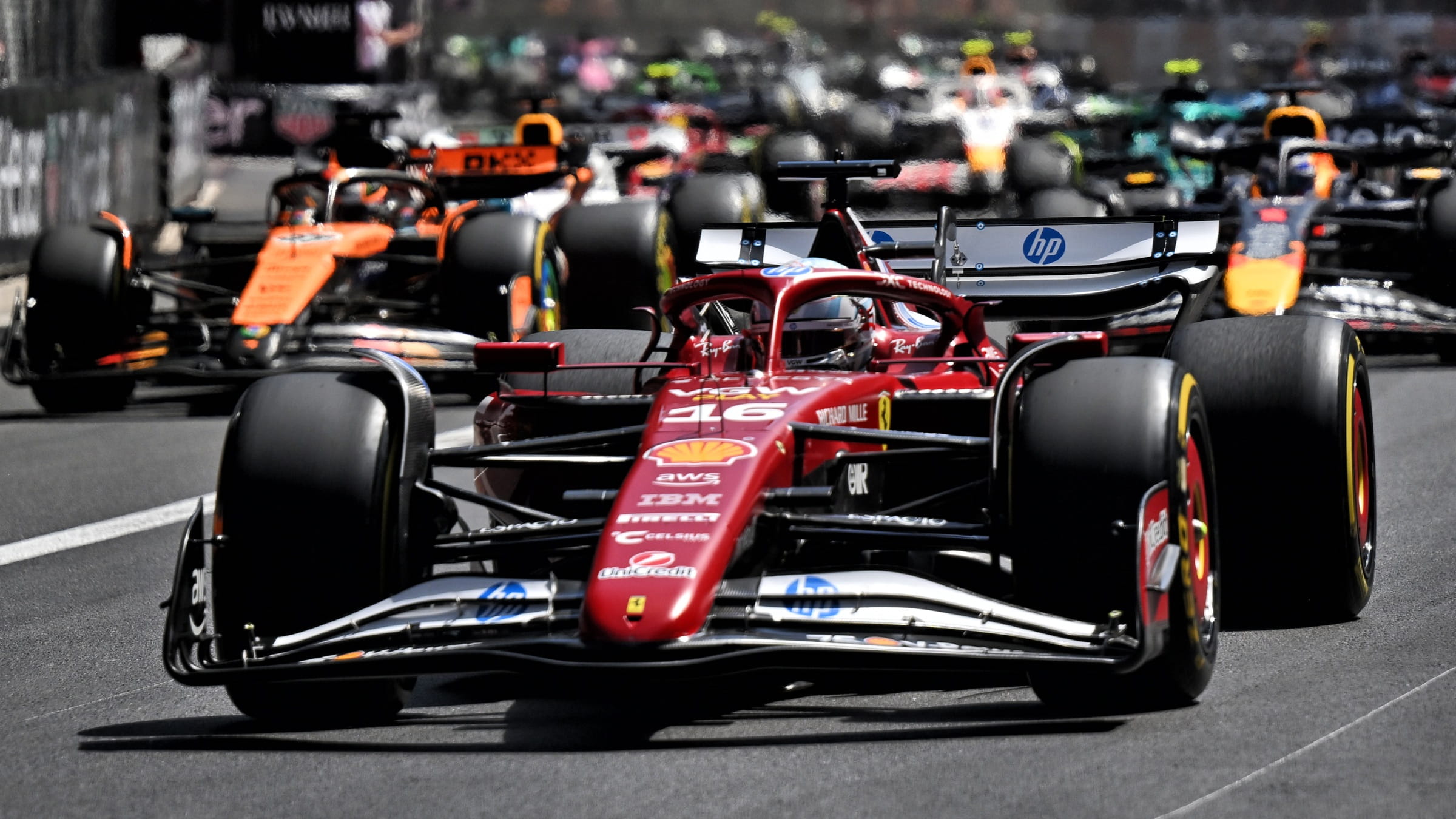Car
The unexpected challenges of driving F2 and F3 in the wet
by Josh Suttill
5min read
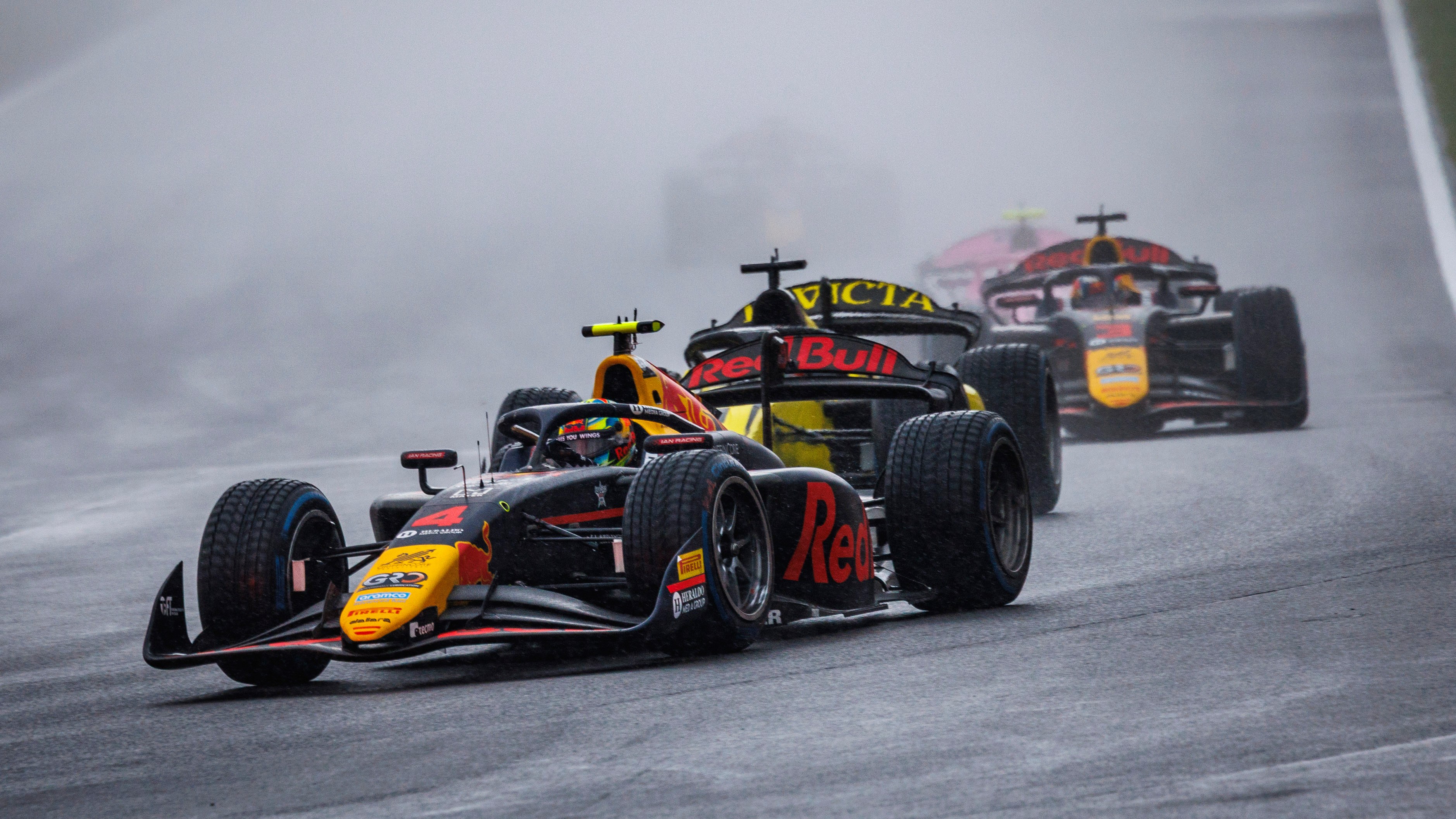
Formula 2 and Formula 3 help drivers get ready for Formula 1 in many different ways, including low visibility in rain-affected races. Nowhere was this more evident in 2025 than over the races in Great Britain and Belgium.
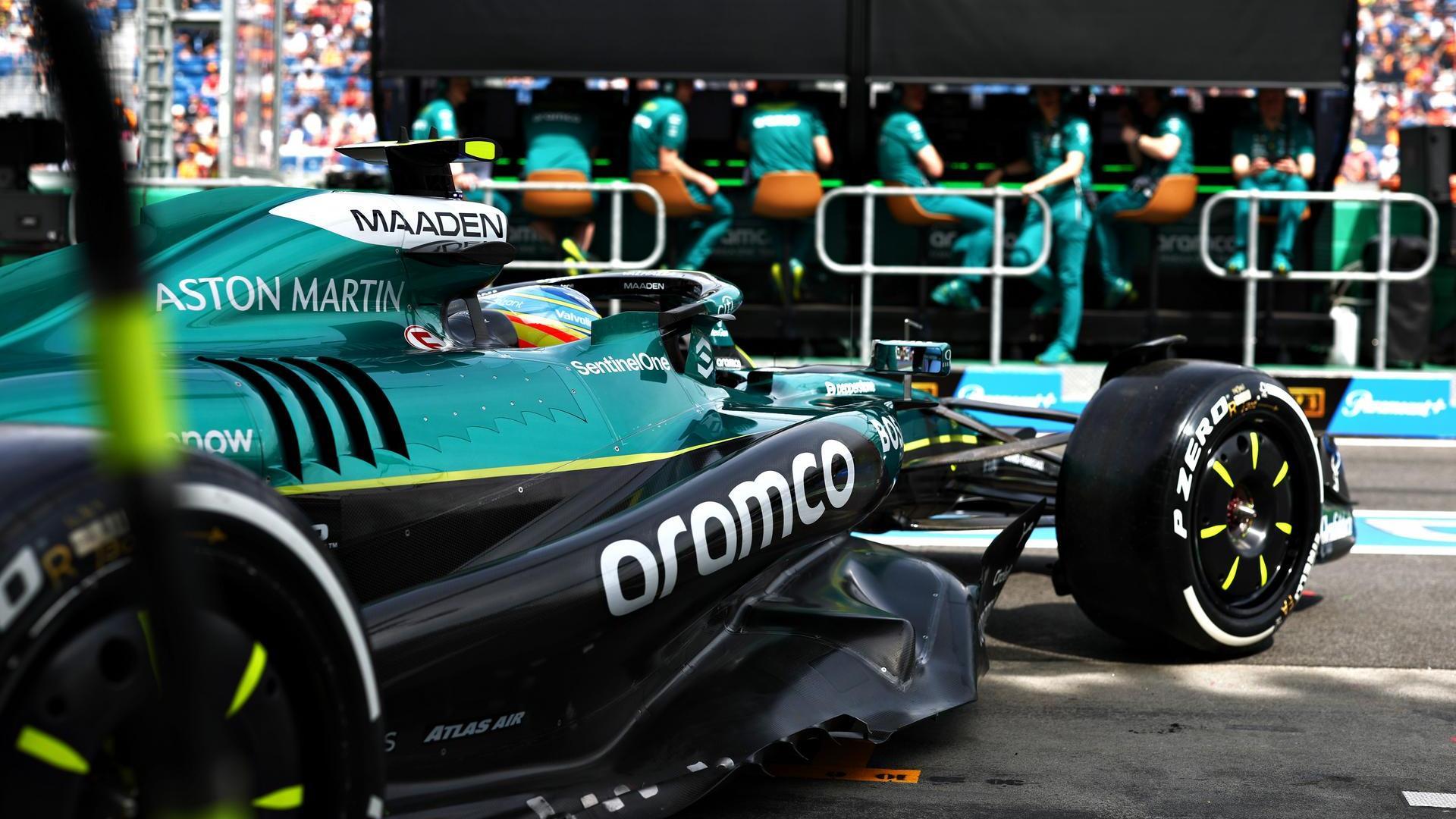
Sign up for a newsletter and we'll make sure you're fully up-to-date in the world of race technology
F1 cars spend a lot of time behind the safety car in wet races as, at the high speeds F1 cars reach, their ground effect aerodynamics throw up lots of water and impede visibility. F2 and F3 cars don’t face this problem as badly, but visibility can still be tough.
There’s another element that adds a challenge to F2 and F3 cars in the wet.
While F1 has bespoke intermediate and wet tyre compounds that can cope with light and heavy rain, respectively, F2 and F3 have one wet compound for the same conditions.
That means the wet tyres have to cope with a wider range of conditions.
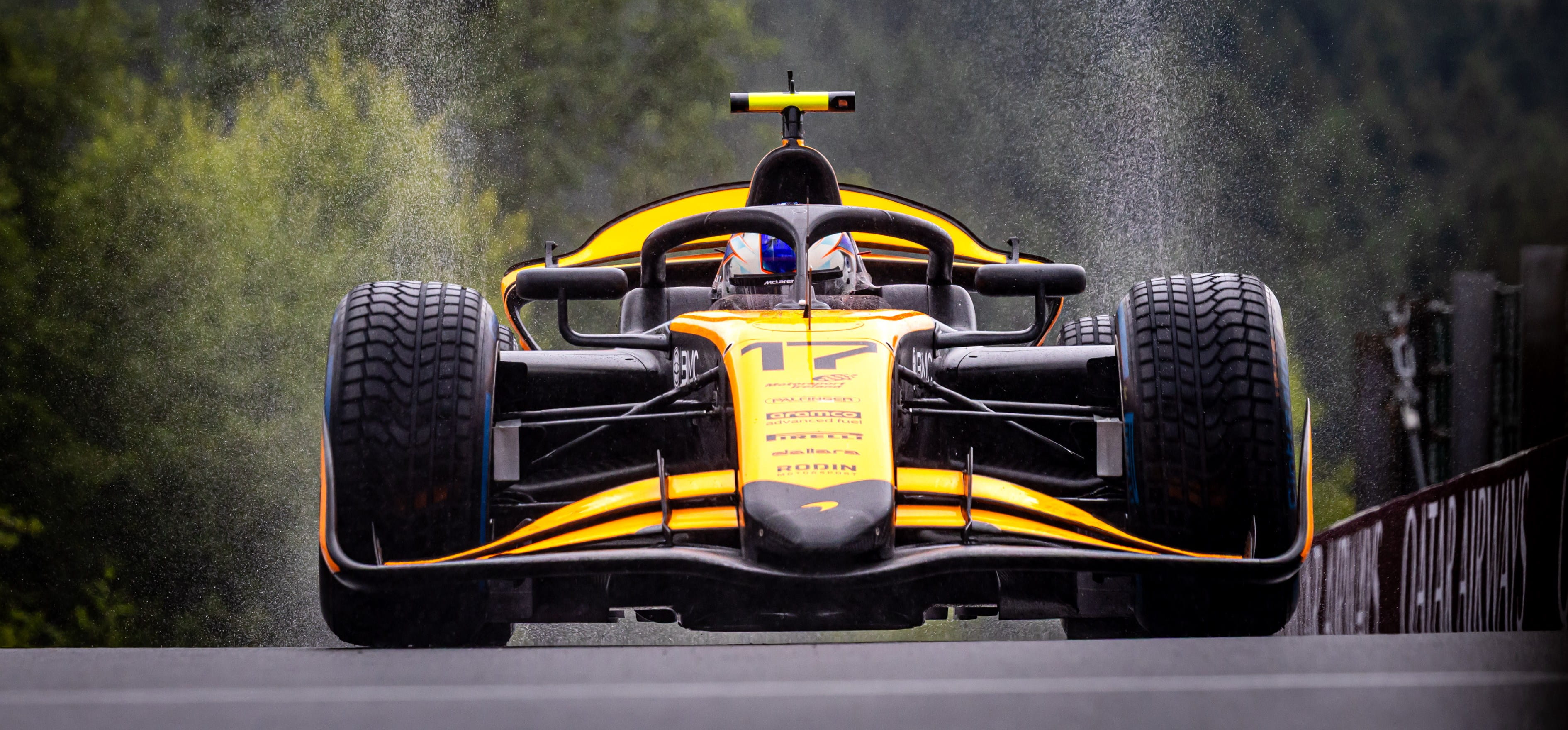
Rodin Motorsport’s Alex Dunne driving in wet conditions with water spraying off his wet tyres at Spa-Francorchamps
‘Like I was driving a rally car’
Super Formula champion and ART Grand Prix F2 driver Ritomo Miyata says tyre management is therefore “very important” in wet conditions in F2 - which was the case in Belgium and Great Britain.
Rodin Motorsport’s Alex Dunne, who finished second in the wet Silverstone F2 feature race and crossed the finish line first in the wet Belgian F2 feature race before being given a time penalty, explained: “Three laps into the Silverstone feature race, it kind of felt like I was driving a rally car, I was turning the opposite way through every corner.
“I think the tyres are more made for conditions you never really drive in, so when it’s not super wet, the tyres degrade pretty quickly, that’s definitely something that’s tricky to manage as a driver.”
In the feature race at Spa-Francorchamps in Belgium, the first third of the track was soaked and the other two-thirds were drier.
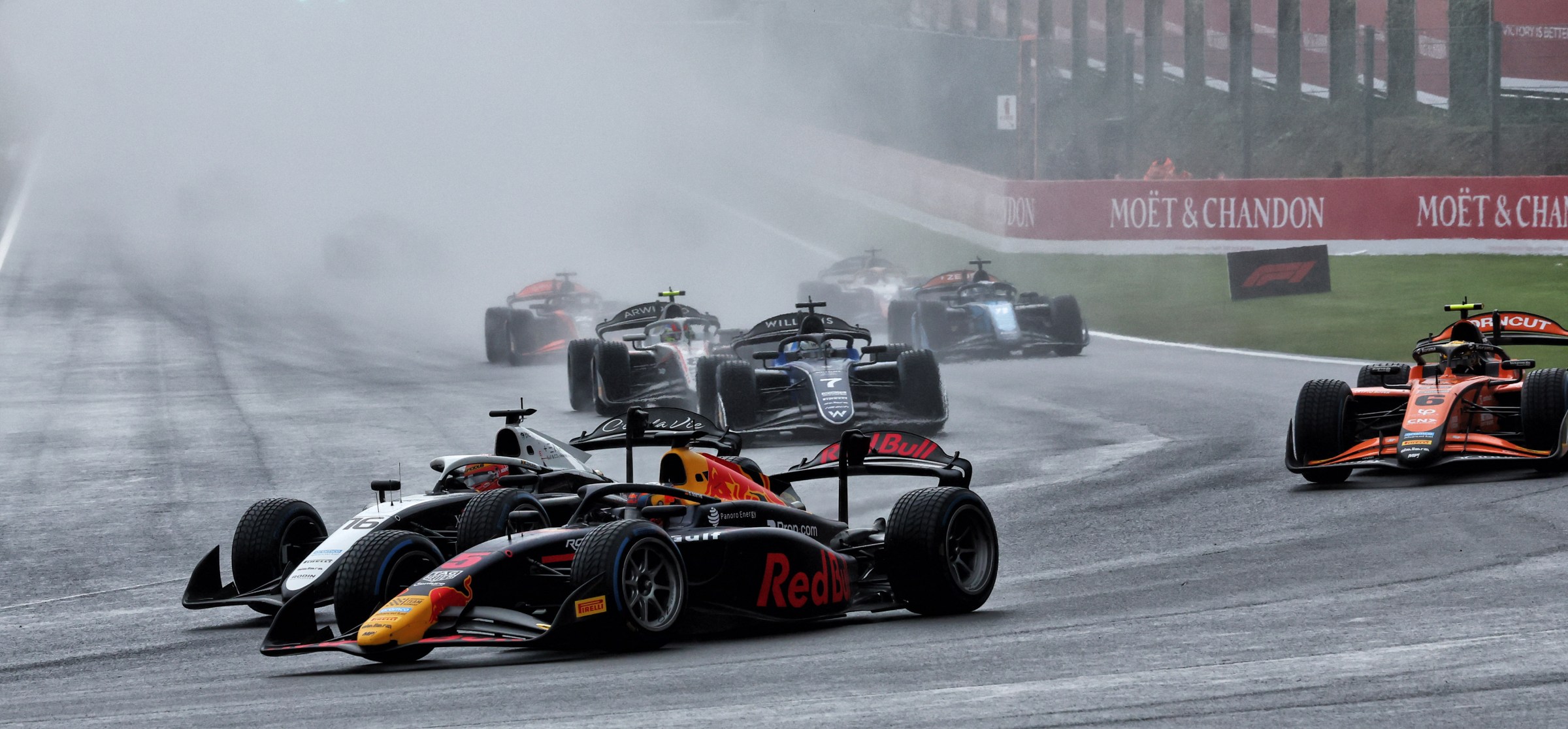
Spa-Francorchamps is a long track, which means conditions at the start of a lap can be different to conditions in the middle or end
It also stopped raining during the first half of the race, which meant the drivers had a huge challenge to keep the tyres alive - with the field all making a stop for fresh wets when the rain returned later in the race.
“Today was definitely significantly worse [than Silverstone],” Dunne explained after winning on the road at Spa - before being given a technical penalty.
He said that oversteer and sliding was rife in the car after the rear tyres began to degrade.
“I spent the first half of the first stint pretty much not turning the steering wheel, the car pretty much just turned by itself because I had so much oversteer everywhere.
“I’m sure if I did a couple of things better in the beginning of the race, the degradation would have been a little bit less.”
The wet vs dry set-up choice
Set-up choices made earlier in the weekend also helped drivers in the wet at Spa.
In dry conditions at Spa, teams apply lower-downforce configurations with shallower wing angles as the circuit has long high-speed sections. Of course, there needs to be some downforce for the medium-speed corners in sector two and the low-speed final chicane and first corner.
In a wet race, more downforce is preferred as it pushes the car down, lending it more grip, and tyre heat - which is hard to build up in the colder, soaking conditions.
That’s always a hard thing for the F2 teams to get right, especially with such an unpredictable forecast.
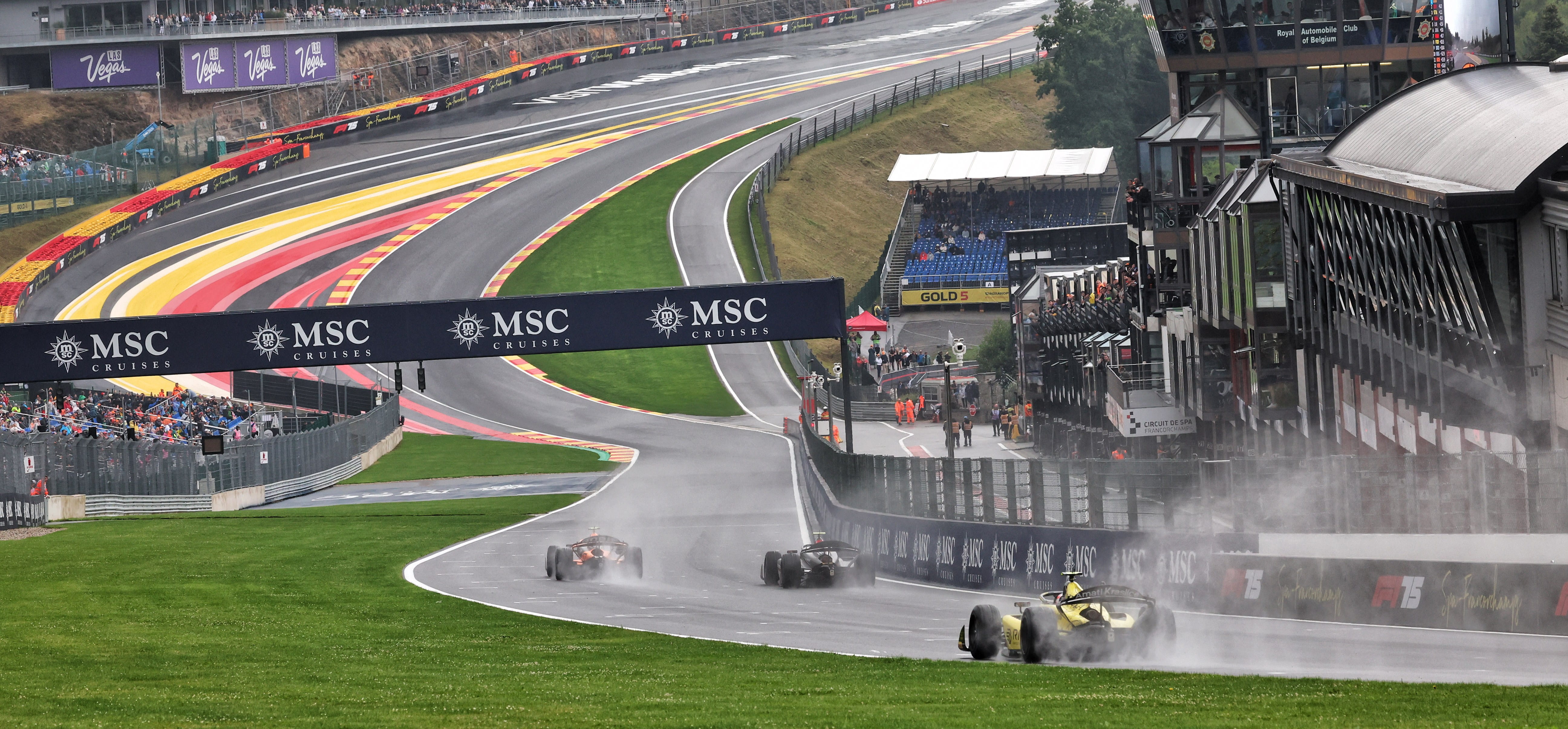
Drivers need more downforce in wet conditions to tackle corners such as Eau Rouge and Raidillon, pictured
The F3 unknown - and why they can’t push 100%
How exactly the new-for-2025 Formula 3 car performs in the rain over a race distance is a bit more of an unknown at this stage of its debut season.
The opening F3 feature race in Australia was curtailed by rain and much of it had to be run behind the safety car. At Silverstone, rain led to red flags and an early finish to the wet race.
So, when the F3 drivers turned up to Spa-Francorchamps with rain on the horizon, they were unsure about how things would proceed.
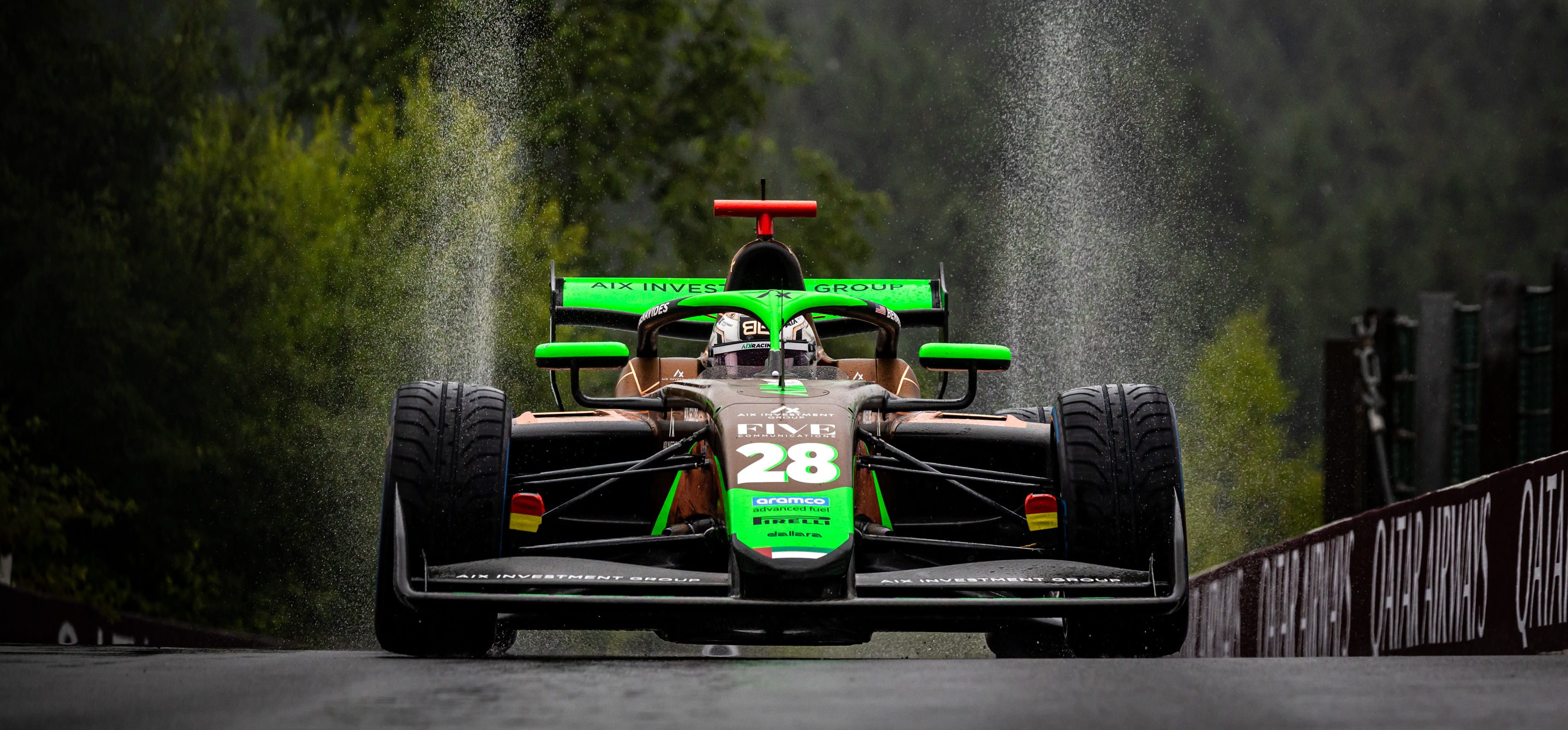
Brad Benavides’s AIX Racing car expelling water from its wet tyres at Spa-Francorchamps
There were incidents both on the formation lap and when the race in Belgium started behind the safety car, which led to a red flag - and another early finish.
Despite that, the F3 drivers have already had some laps in the wet in the new F3 car - and they compared it to Formula Regional (FRECA) and Formula 4 machines.
“The feeling of driving in the wet is not too different; the biggest difference is the spray, the downforce the car generates,” said Trident F3 driver Noah Stromsted.
“For sure it’s also more grip and you have to manage the tyres more than in F4 and FRECA, there you can push every lap and nothing would happen.”
His team-mate Charlie Wurz touched on just why faster single-seater cars are harder to drive in the wet: “With more downforce, you have more spray - it makes it more difficult”.
“When you’re in the smaller junior formulas, you just push 100% of the time; here you have to be smarter with it and that makes things more interesting.”
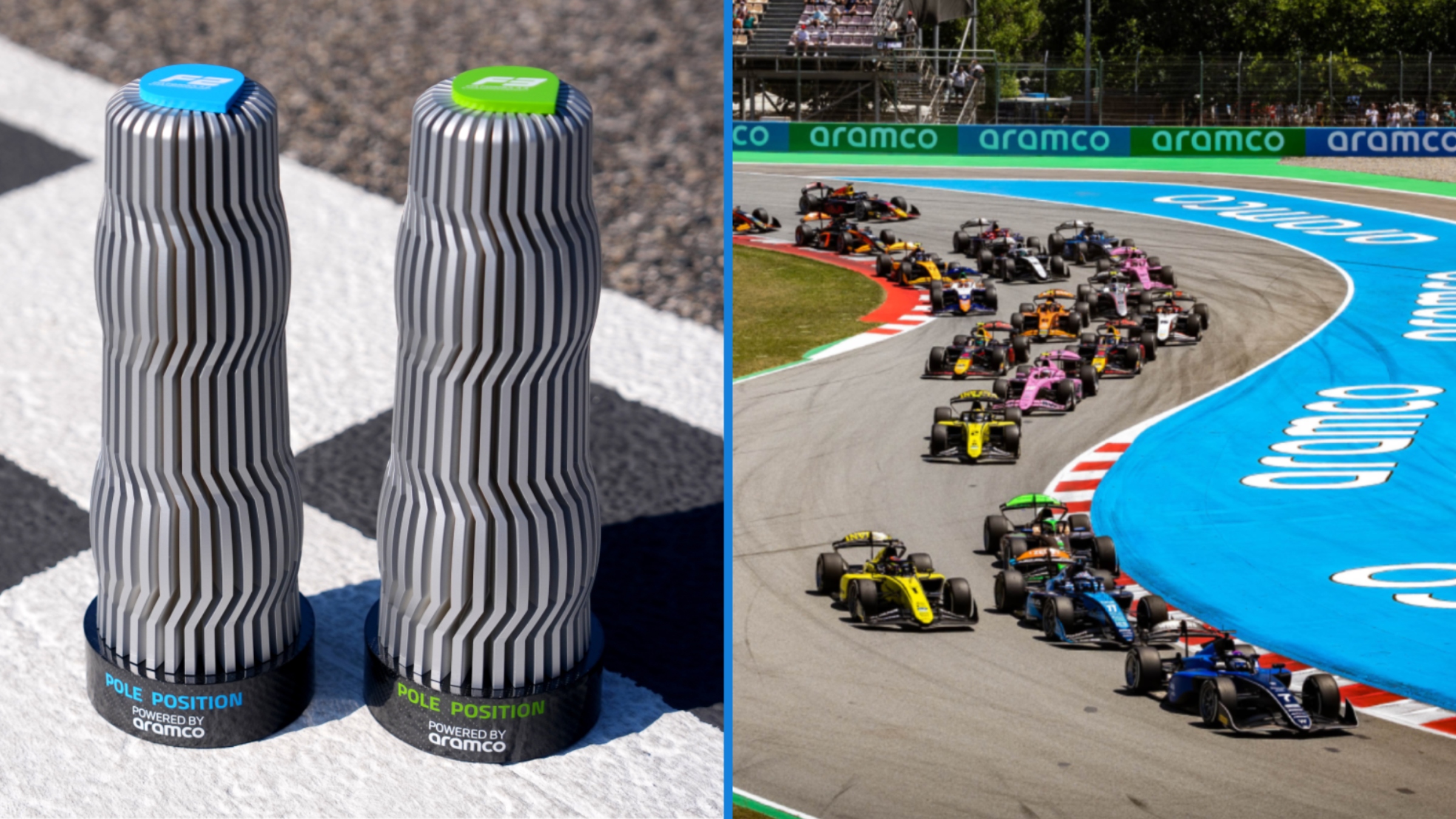
.jpg?cx=0.5&cy=0.5)
